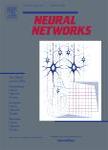版权所有:内蒙古大学图书馆 技术提供:维普资讯• 智图
内蒙古自治区呼和浩特市赛罕区大学西街235号 邮编: 010021

作者机构:Fujian Univ Technol Inst Artificial Intelligence Fuzhou Peoples R China Fujian Univ Technol Fujian Prov Key Lab Big Data Min & Applicat Fuzhou Peoples R China Fujian Univ Technol Inst Smart Marine & Engn Fuzhou 350118 Peoples R China
出 版 物:《NEURAL NETWORKS》 (Neural Netw.)
年 卷 期:2025年第185卷
页 面:107169页
核心收录:
学科分类:1002[医学-临床医学] 1001[医学-基础医学(可授医学、理学学位)] 0812[工学-计算机科学与技术(可授工学、理学学位)] 10[医学]
基 金:Scientific Research Foundation of Fujian University of Technology China [GY-Z21183]
主 题:Attention mechanism Attributed graph Graph anomaly detection Graph filtering Graph neural networks
摘 要:Anomaly detection on graph data has garnered significant interest from both the academia and industry. In recent years, fueled by the rapid development of Graph Neural Networks (GNNs), various GNNs-based anomaly detection methods have been proposed and achieved good results. However, GNNs-based methods assume that connected nodes have similar classes and features, leading to issues of class inconsistency and semantic inconsistency in graph anomaly detection. Existing methods have yet to adequately address these issues, thereby limiting the detection performance of the model. Therefore, an anomaly detection method that consists of one semantic fusion-based node representation module and one attention mechanism-based node representation module is proposed to resolve the aforementioned issues, respectively. The main highlights of the current study are outlined below: First, a novel framework is developed, aiming to better resolve the issues of class inconsistency and semantic inconsistency in graph anomaly detection. Second, we propose the semantic fusion-based node representation module which is based on Chebyshev polynomial graph filtering and is able to effectively capture high-frequency and low-frequency components of graph signals. Third, to overcome semantic inconsistency in graph data, we devise an attention mechanism-based node representation module which can adaptively learns importance information of graph nodes, resulting in significant improvement of the model performance. Finally, experiments are carried out on five real-world anomaly detection datasets, and the results show that the proposed method outperforms the state-of-the-art methods.